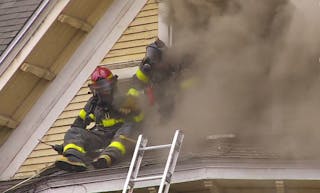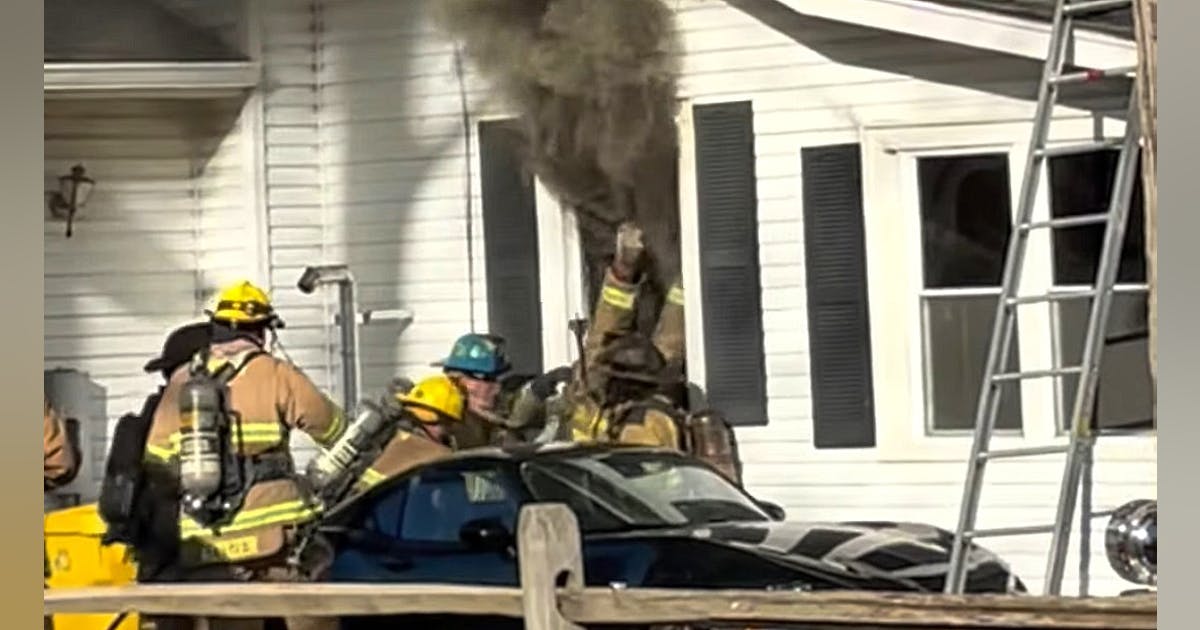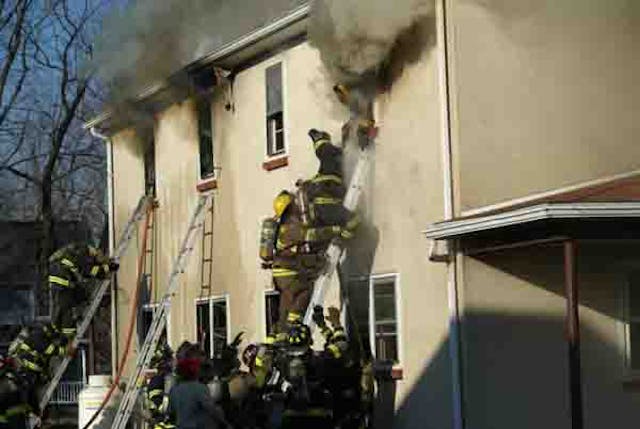A Routine Call Turns Deadly
In the early hours of the morning, firefighters in a quiet neighborhood responded to what seemed like a routine house fire. Neighbors had reported heavy smoke billowing from the windows of a single-family home, raising fears that someone might still be trapped inside.
Crews quickly advanced into the building, equipped with hoses, thermal imaging cameras, and protective gear. What they could not anticipate was how quickly the situation would escalate. Within minutes, the structure transformed into a dangerous inferno, culminating in a flashover — one of the deadliest events a firefighter can face.

What Is A Flashover?
A flashover occurs when heat inside a confined space rises so dramatically that every flammable surface ignites almost simultaneously. At that point, flames roll across the ceiling, oxygen levels drop, and temperatures can soar above 1,000°F. Even with modern turnout gear, survival is nearly impossible inside those conditions.
In this particular fire, the warning signs came fast. Thick black smoke lowered toward the floor, flames began racing across the ceiling, and the temperature spiked suddenly. The firefighters’ training kicked in. With only seconds to act, they bailed out through doors and windows just before the house was fully consumed.
Dramatic Escape Caught On Video
Neighbors who had gathered outside recorded the terrifying scene on their phones. The footage, later shared widely online, showed firefighters leaping from windows and stumbling out into the street as fire erupted behind them. Smoke and flames billowed from the home, leaving no doubt that survival hinged on their split-second decision to retreat.
Thankfully, no civilians were found inside the building. The home itself was destroyed, but the firefighters escaped with their lives.

Why Modern House Fires Are So Dangerous
Experts warn that modern house fires often reach flashover much faster than those in older homes. Decades ago, a structure might take 15–20 minutes to reach this stage. Today, many houses can flash over in under six minutes due to synthetic materials and open floor plans. Furniture made from foam and plastics burns hotter and faster, releasing toxic gases that make conditions inside even more deadly.
This reality leaves both residents and first responders with far less time to escape. It also makes community fire safety — working smoke alarms, home escape plans, and awareness — more critical than ever.

Training Saves Lives
The crew’s ability to escape was not luck alone. Firefighters undergo rigorous training to recognize flashover warning signs and to practice rapid bailout techniques. Departments across the country now use flashover simulators, giving firefighters controlled exposure to the intense heat and visual cues of a developing event.
Emergency exit drills, rope-assisted window escapes, and strict air management are all standard practices. Thermal imaging cameras, used that night, also play a key role by detecting heat patterns hidden by smoke. In this case, training and quick thinking ensured every firefighter made it out alive.
The Toll On Firefighters
While physical injuries were avoided, close calls like this leave a lasting emotional impact. Firefighters often carry the mental burden of these experiences, which is why many departments now emphasize counseling and peer support. Surviving a flashover is a reminder not only of the dangers of the profession but also of the importance of mental health resources within the fire service.
Community Reaction
The community responded with an outpouring of support. Social media filled with praise for the firefighters’ bravery, while local residents expressed relief that no one was harmed. Some even visited the firehouse to deliver food and thank-you notes.
Fire officials also took the opportunity to remind the public about fire prevention. Working smoke alarms, closed bedroom doors, and practiced escape plans can dramatically increase survival chances. Officials stressed that residents should never hesitate to call 911 at the first sign of smoke or fire.

Lessons Learned From The Close Call
The incident is expected to be studied within the department as an example of how fast conditions can change inside a burning structure. Each flashover teaches new lessons, not just about the science of fire but also about the split-second decision-making firefighters must rely on.
Although the house was lost, the survival of the crew was the ultimate victory. As one officer later noted, they entered the building because there was a chance someone needed help. When conditions became unsurvivable, they fought for their own lives. That choice, made in seconds, ensured that every firefighter would return home to their families.

Conclusion: Courage In The Face Of Fire
The terrifying flashover that engulfed the home serves as a vivid reminder of the unpredictable nature of fire. It also highlights the courage, training, and teamwork that firefighters rely on every time they step into danger.
While the flames destroyed a building, they could not claim the lives of the men and women who rushed in to save others. Their dramatic escape stands as proof that preparation, instinct, and bravery make the difference between tragedy and survival.
For the public, the lesson is equally clear: fire safety must never be taken lightly. Fires move faster than most people realize, and every second matters. For firefighters, the night underscored the harsh reality of their work — that every call carries the potential for danger, but also the opportunity to protect and to save.
